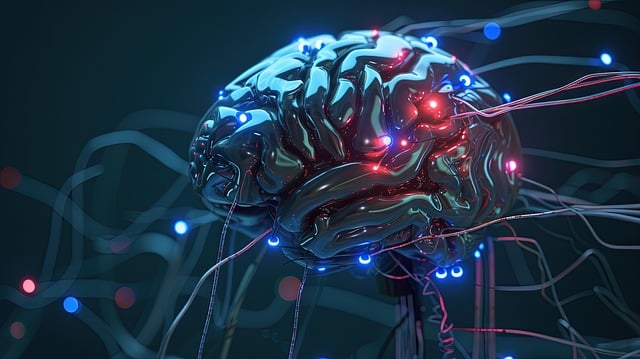Improving your machine learning models is essential for achieving better accuracy, efficiency, and overall performance in your AI projects. Whether you’re dealing with predictive analytics, natural language processing, or computer vision, enhancing your model’s performance can significantly impact the results. By focusing on areas like data preprocessing, feature engineering, and hyperparameter tuning, you can elevate your models to deliver optimal outcomes.
How to Improve Your Machine Learning Models
Improving machine learning models involves a multi-faceted approach, combining techniques, best practices, and continuous evaluation. Below, we explore actionable steps you can take to enhance your model’s performance effectively.
Techniques to Enhance Machine Learning Model Accuracy
One of the most critical aspects of machine learning is achieving high accuracy. This can be done through:
1. Data Preprocessing Techniques
Clean and structured data is the backbone of any successful machine learning model. Data preprocessing involves:
- Handling Missing Data: Use techniques like mean imputation, median imputation, or advanced methods such as KNN imputation.
- Outlier Detection and Removal: Identify and manage outliers using methods like the Z-score or IQR.
- Scaling and Normalization: Normalize your data using Min-Max scaling or standardization for better model convergence.
Preprocessed data ensures the model learns from high-quality input, ultimately boosting accuracy.
2. Feature Engineering for Better Models
Feature engineering can uncover hidden patterns in the data. Key steps include:
- Feature Selection: Use techniques like Recursive Feature Elimination (RFE) or LASSO regression to identify the most influential features.
- Feature Creation: Generate new features by combining existing ones or applying domain knowledge.
- Dimensionality Reduction: Utilize PCA (Principal Component Analysis) to simplify data without losing critical information.
By refining features, you’re effectively teaching your model to understand the data better.
3. Hyperparameter Tuning for Optimization
Fine-tuning hyperparameters can significantly improve model performance. Some strategies include:
- Grid Search: Test combinations of hyperparameters systematically.
- Random Search: Sample hyperparameters randomly for a broader search.
- Bayesian Optimization: Apply probabilistic models to find the best settings efficiently.
Consistent tuning ensures your model operates at peak performance.
Best Practices for Optimizing Machine Learning Models
Optimization involves adhering to proven methodologies to ensure robust models. Focus on these practices:
1. Cross-Validation Techniques
Cross-validation splits the data into training and testing sets multiple times to evaluate model performance. Key methods include:
- K-Fold Cross-Validation: Divides data into k subsets, training on k-1 while testing on the last subset.
- Stratified Sampling: Ensures proportional representation of classes across folds.
This approach reduces overfitting and provides reliable performance metrics.
2. Ensemble Learning for Performance Boost
Ensemble methods combine multiple models to improve predictive accuracy. Examples include:
- Bagging: Reduces variance by combining the outputs of models trained on random subsets of data.
- Boosting: Sequentially improves weak models, as seen in algorithms like XGBoost, AdaBoost, and Gradient Boosting.
- Stacking: Integrates predictions from multiple models using a meta-model.
Ensemble techniques are highly effective for complex datasets.
3. Regularization to Prevent Overfitting
Regularization introduces penalties for large coefficients, helping models generalize better. Techniques include:
- L1 Regularization (LASSO): Shrinks less significant features to zero.
- L2 Regularization (Ridge): Penalizes the magnitude of coefficients.
- Elastic Net: Combines L1 and L2 for balanced feature selection and generalization.
By incorporating regularization, you minimize overfitting and improve model reliability.
Strategies to Improve Generalization
Generalization is the model’s ability to perform well on unseen data. Strategies include:
1. Addressing Bias-Variance Tradeoff
- Reducing Bias: Use complex models like neural networks or decision trees.
- Reducing Variance: Prune models or aggregate multiple models (e.g., bagging).
Balancing these ensures models neither underfit nor overfit.
2. Using Augmented Data
Augmenting datasets improves robustness. Techniques include:
- Synthetic Data Generation: Use GANs or SMOTE for balanced datasets.
- Data Augmentation: Apply transformations like rotation or flipping for image data.
3. Monitoring Model Drift
Regularly evaluate models in production to detect changes in data distributions, ensuring consistent performance.
Advanced Methods to Boost Machine Learning Model Accuracy
1. Transfer Learning
Reuse pre-trained models for related tasks, saving time and resources.
2. Automated Machine Learning (AutoML)
Leverage tools to automate model selection, hyperparameter tuning, and feature engineering.
3. Explainable AI (XAI)
Implement techniques like SHAP or LIME to interpret model predictions, making improvements data-driven.
4. Neural Architecture Search (NAS)
Use AI-driven methods to design optimal neural network architectures.
Conclusion
Improving machine learning models requires a holistic approach that includes data preparation, feature engineering, hyperparameter tuning, and consistent monitoring. By leveraging advanced techniques such as ensemble learning, transfer learning, and AutoML, you can create robust models capable of delivering accurate and reliable predictions. Continual evaluation and adaptation are key to ensuring your models stay relevant and effective in a dynamic environment.






